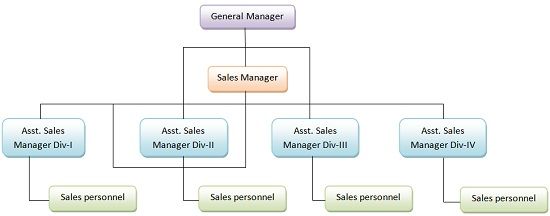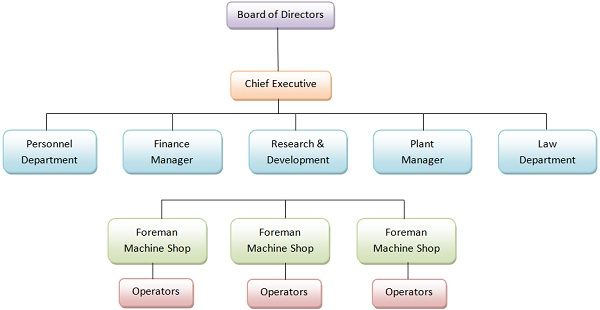Organization
Definition: Organization refers to a collection of people, who are involved in pursuing defined objectives. It can be understood as a social system which comprises all formal human relationships. The organization encompasses division of work among employees and alignment of tasks towards the ultimate goal of the company.
It can also be referred as the second most important managerial function, that coordinates the work of employees, procures resources and combines the two, in pursuance of company’s goals.
Process of Organization
- Step 1: Determination and classification of firm’s activities.
- Step 2: Grouping of the activities into workable departments.
- Step 3: Assignment of authority and responsibility on the departmental executives for undertaking the delegated tasks.
- Step 4: Developing relationship amidst superior and subordinate, within the unit or department.
- Step 5: Framing policies for proper coordination between the superior and subordnate and creating specific lines of supervision.
Organization is a goal oriented process, which aims at achieving them, through proper planning and coordination between activities. It relies on the principle of division of work and set up authority-responisbility relationship among the members of the organization.
Types of Organization Structure
- Formal Organization Structure: The organization structure of jobs and positions, with specified activities and relationships, is known as formal organization structure. It is created by management, to attain the objectives of the company.
- Line Organization: Line organization is the oldest and simplest pattern of orgnization, wherein the supervisor has outright supervision over the subordinate. The flow of authority is from the top level executive to the person at the lowest level of the organization’s echelon.
- Functional Organization: As the name suggests, functional organization structure is one in which the thorough task of managing and directicting the employees, is grouped as per the functions or type of work involved.
- Line and Staff Organization: This type of organization structure is an improvement over the traditional line organization. In line and staff organization primary and supportive activities are related to the line of supervision by appointing supervisor and specialist, who are linked to line authority.
- Project Management Organization: Project Organization is not an independent organization, like the organization structure discussed above. Instead it is a set up within an organization, so as to accomplish a project or firm’s objectives. It is led by project manager, who is responsible for project objectives.
- Matrix Organization: Matrix organization is the emerging structure of the organization, which is a combination of functional organization and project organization. In such an organization, the functional departments such as production, accounting, marketing, human resource, etc. constitute a vertical chain of command, while project division consitute horizontal line of authority.
- Informal Organization Structure: The relationship between the employees, that relies on personal attitudes, prejudices and interests rather than procedures. It is system of personal and social connection, whose creation is not needed by formal organization.
The organization structure is a basic idea, which depends on the activity authority relationship in the company. It is designed in such a way to realise business objectives.










